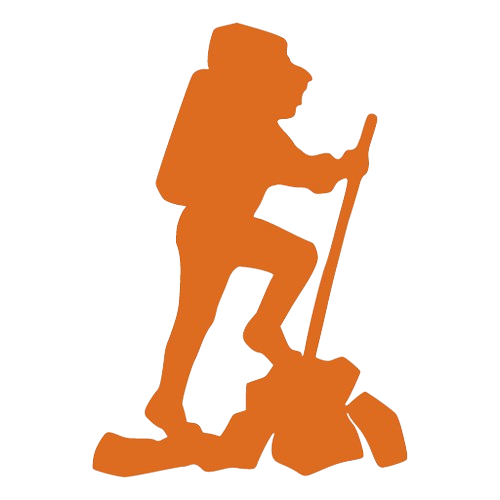What Is Paragliding & How Does It Work?

Did You Know? What is Paragliding & How Does It Work?
Hey there, Have you ever dreamed of flying like a bird? Well, that’s exactly what paragliding lets people do! It’s an exciting sport where you use a special parachute-like wing to soar high in the sky, feeling the wind beneath you. But how does it work? Let’s break it down in a way that’s super easy to understand!
What is Paragliding?
Paragliding is an exhilarating adventure sport that allows individuals to experience the pure joy of flight in its simplest and safest form. Using a lightweight, foot-launched glider, pilots soar through the sky, harnessing the power of the wind and thermals to stay airborne.
The process is straightforward—strap into a harness, spread out the wing on a hilltop or mountain, inflate it like a kite, take a few steps forward, and suddenly, you’re lifted into the sky, floating like a bird.
Types of Paragliding
- Tandem Paragliding: Perfect for beginners or those not confident flying solo, tandem paragliding allows a passenger to fly with an experienced pilot. The pilot controls the glider while the passenger enjoys the ride.
- Cross-Country Paragliding: This involves flying long distances, often covering tens or even hundreds of kilometres. Cross-country paragliding requires advanced skills, such as reading thermals and navigating air currents, to extend flight time and distance.
- Acrobatic Paragliding: For the adrenaline junkies, acrobatic paragliding introduces aerial stunts, spins, and flips. Acro pilots must have a deep understanding of the glider’s limits and advanced control techniques to perform safely.
- Soaring: This type involves flying along ridges where winds are forced upwards, allowing pilots to stay airborne for extended periods by riding the updrafts.
How Paragliding Works
Paragliding equipment consists primarily of the glider (also known as a wing), harness, reserve parachute, and helmet. The glider is made from high-performance fabric and is designed to inflate with air, forming a wing-like structure that catches thermals (warm rising air) or updrafts, which allow the pilot to stay airborne. The pilot is seated in a harness attached to the glider by several lines.
The process of paragliding involves running off an elevated takeoff point, usually a hill or mountain, into the wind. The wing inflates as air enters it, and the pilot is lifted off the ground. Once in the air, the pilot can control the glider’s direction and speed using two brake toggles attached to the lines. By adjusting these controls, the pilot can turn, ascend, or descend, depending on the conditions of the wind and thermals.
Must Read: Paragliding In Gangtok
Launching For Paragliding
The wing is placed into an airstream, either by running or being pulled or by an existing wind. The wing moves up over the pilot into an edge during which it can carry the person.
The pilot first inflates the wing by pulling it up sort of a kite then runs down the hillside until the flying speed has been reached. Usually, a speed of about 19/20 km per hour is enough to launch it.
There are two types of launching techniques used on higher ground (Forward launch and reverse launch) and one assisted launch technique (Towed launch) utilized in flatland areas:
In low winds, the wing is inflated with a forward launch, where the pilot runs forward with the wing behind so that the atmospheric pressure generated by the forward movement inflates the wing.
It’s often easier, because the pilot only has got to run forward, but the pilot cannot see his wing until it’s above him, where he has got to check it during a very short time for proper inflation and untangled lines before the launch.
In higher winds, a reverse launch is employed, with the pilot facing the wing to bring it up into a flying position, then turning around under the wing and running to finish the launch.
Reverse launches have a variety of benefits over a forward launch. It’s more straightforward to examine the wing and check if the lines are free because it leaves the bottom.
Within the presence of wind, the pilot is often tugged toward the wing, and facing the wing makes it easier to resist this force and safer just in case the pilot slips (as against being dragged backwards).
However, the movement pattern is more complex than the forward launch, and therefore the pilot has got to hold the brakes perfectly and switch to the right side so he doesn’t tangle the lines.
These launches are normally attempted with an inexpensive wind speed, making the bottom speed required to pressurize the wing much lower.
Pilots can also be launched with a tow in flatter countryside. Once at full height (towing can launch pilots up to 3000 feet altitude), the pilot pulls a release cord, and therefore, the towline falls away.
This needs separate training, as flying on a winch has quite different characteristics from free-flying. There are two major ways to tow: pay-in and pay-out towing.
Pay-in towing involves a stationary winch that winds within the towline and thereby pulls the pilot into the air. The space between the winch and the pilot at the beginning is around 500 meters or more.
Pay-out towing involves a moving object, sort of a car or a ship, that pays out a line slower than the speed of the thing, thereby pulling the pilot up in the air.
In both cases, it’s vital to possess a gauge indicating line tension to avoid pulling the pilot out of the air.
Landing
Landing a paraglider, like all unpowered aircraft that cannot abort a landing, involves some specific techniques and traffic patterns.
Paragliding pilots most ordinarily lose their height by flying a figure 8 over a landing zone until the right height is achieved, then line up into the wind and provide the glider full speed.
Once the right height (about a meter above ground) is achieved, the pilot will ‘stall’ the glider and allow it to land.
Why You Should Try Paragliding
- Experience Freedom: Paragliding offers an unparalleled sense of freedom, floating in the open skies with minimal equipment. It’s a unique way to disconnect from the world below and connect with nature from a whole new perspective.
- Adrenaline Rush: For thrill-seekers, paragliding delivers a powerful adrenaline rush. The moment you take off, the blend of excitement and serenity is a memorable experience.
- Scenic Views: Many paragliding sites are located in beautiful settings, allowing you to enjoy some of the most spectacular views of mountains, lakes, coastlines, and valleys from above.
- Accessible to All: With tandem paragliding, even those with no prior experience can enjoy the sensation of flying. It’s an activity that is inclusive and welcoming to adventurers of all ages.
Is Paragliding Safe?
Safety in paragliding largely depends on the pilot’s skills, the weather conditions, and the quality of the equipment. Modern paragliding gear is designed with safety features such as reserve parachutes, impact-absorbing harnesses, and enhanced gliders that are stable and easy to control. Additionally, thorough training helps new pilots understand how to assess weather conditions and avoid dangerous situations.
Beginners are usually advised to start with tandem paragliding and progress to solo flying after undergoing professional training from certified paragliding schools.
Best Places to Go for Paragliding
- Bir Billing, India: Known as the paragliding capital of India, Bir Billing offers stunning views of the Himalayas. It is one of the top destinations for both beginners and seasoned paragliders.
- Interlaken, Switzerland: Surrounded by snow-capped mountains, lush meadows, and deep blue lakes, Interlaken offers an unparalleled paragliding experience.
- Queenstown, New Zealand: Known as the adventure capital of the world, Queenstown provides scenic vistas, rugged mountains, and crystal-clear lakes, making it a top paragliding destination.
- Pokhara, Nepal: Overlooking the serene Phewa Lake and surrounded by the Annapurna mountain range, paragliding in Pokhara is a serene and awe-inspiring experience.
- Oludeniz, Turkey: Famous for its turquoise-blue waters and stunning coastline, Oludeniz is considered one of the world’s best locations for paragliding, with consistent weather conditions and picturesque views.
Cost of Paragliding
In India, the cost of paragliding varies by location, duration, and type of flight. Here’s an approximate breakdown in INR:
- Tandem Paragliding: ₹3,000 – ₹15,000 per flight (depending on location and duration)
- Solo Paragliding (with certification): ₹8,000 – ₹25,000 per flight (if renting equipment)
- Paragliding Training Courses:
- Beginner Course: ₹65,000 – ₹1,65,000 (including training and equipment rental)
- Advanced Course: ₹1,50,000+ (varies based on school and duration)
Popular paragliding destinations like Bir Billing, Kamshet, Manali, and Nainital have different pricing structures. Would you like a detailed cost breakdown for a specific location?
Traffic pattern
Unlike during launch, where coordination between multiple pilots is simple, landing involves more planning, because quite one pilot may need to land at an equivalent time.
Therefore, a selected approach pattern has been established. Pilots line up on an edge above the airfield and to the side of the landing area, which depends on the wind direction, where they will lose height (if necessary) by flying circles.
From this position, they follow the legs of a flight path during a rectangular pattern to the landing zone: downwind leg, base leg, and final approach.
This enables synchronization between multiple pilots and reduces the danger of collisions because a pilot can anticipate what other pilots around him are going to do next.
Essential Paragliding Equipment
- Glider/Wing: The most important component, it is constructed of ripstop nylon and includes multiple cells that inflate to create lift.
- Harness: A comfortable and secure seat for the pilot, connected to the wing via suspension lines.
- Helmet: A safety requirement to protect the pilot’s head during takeoff, flight, and landing.
- Reserve Parachute: This is a backup system in case of an emergency, ensuring the pilot can descend safely if the glider malfunctions.
- Variometer: A device that measures the pilot’s vertical speed and helps detect thermals, guiding pilots toward better lift.
- GPS: For cross-country paragliding, a GPS helps pilots navigate and track their flight path.
Paragliding Training and Certification
For those serious about taking up paragliding as a hobby or sport, training is essential. Beginners typically start with a basic course, which covers:
- Ground handling and inflating the wing
- Takeoff and landing techniques
- Understanding weather conditions
- Learning the control mechanisms
As you advance, courses cover flight safety, thermally, cross-country navigation, and emergency procedures. Certifications are offered through recognized paragliding associations such as FAI (Fédération Aéronautique Internationale) and APPI (Association of Paragliding Pilots and Instructors).
Conclusion
Paragliding is much more than an adventure sport—it’s a way to connect with the natural elements and experience the thrill of flight in its simplest form.
With proper training, the right equipment, and a sense of adventure, paragliding can be a safe and rewarding experience, offering unforgettable views and a rush of adrenaline.
Whether you’re a beginner looking to fly tandem or an experienced pilot planning cross-country flights, paragliding is an adventure that promises excitement and freedom.
Ready to take off? Paragliding might just be your next great adventure!






